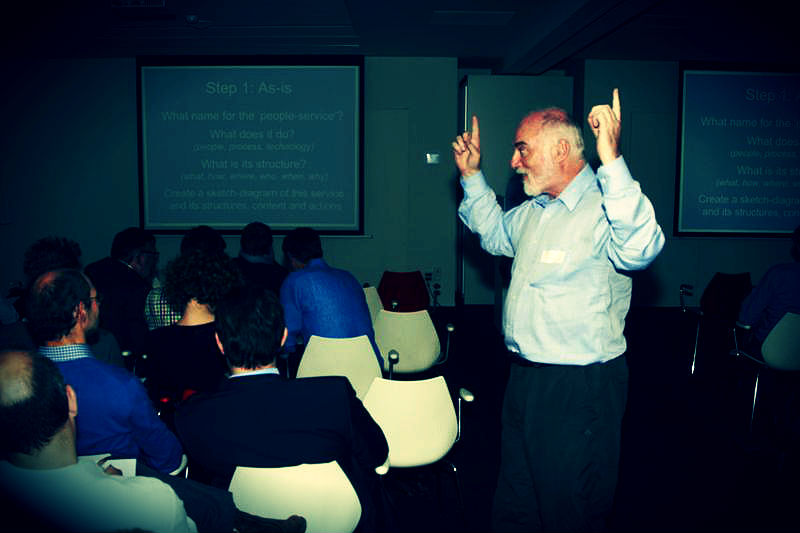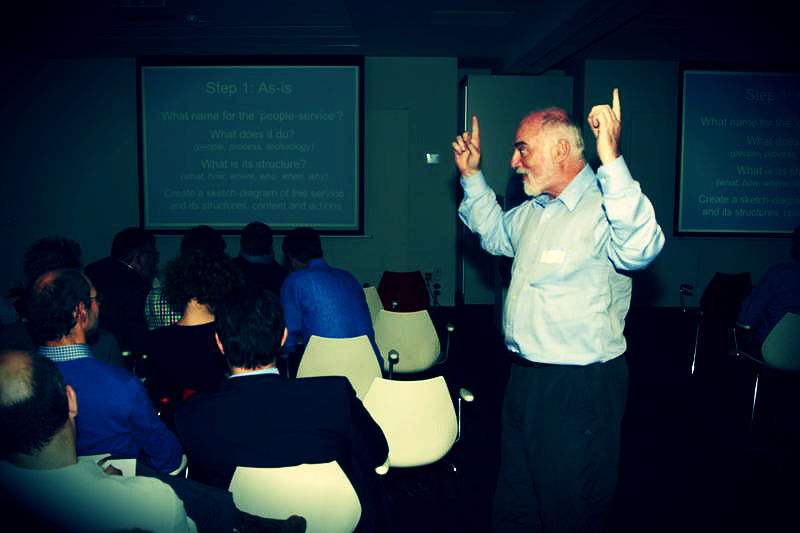
The twentieth BAEA Café was once again very inspiring. Koen Knaepen, known from the COSTA model, talked about how your approach to modelling may help or impede business architecture from improving an enterprise. Tom Graves (twitter, blog, Café slides) moved enterprise architecture’s focus away from IT and towards people. This blog contains some take aways from this seminar.

Keep it simple
Plenty architecture models and frameworks try to capture as much as possible from reality. As a consequence, they become far too complex. In the end, only the creators understand these models. First and foremost however, a model should serve to create a common understanding, help communication and inspire. Hence, keep it simple.
Create common understanding
Creating clarity on seemingly simple terms like customer continues to be a challenge. Too often, a clear definition, understood by everyone in the same way, is lacking. However, without such an unambiguous definition, any discussion is inefficient at best, a pointless waste of time at worst. Make sure you create this common understanding first.
Look at the ecosystem
Which enterprise is only about information? None! Enterprise architecture thus encompasses more than just I(nformation) T(echnology). Each and every IT question leads not only to business questions within your company, but also to questions about the environment in which your company operates (the market, government, lobby or pressure groups, …). Enterprise architecture is about this whole ecosystem.
People are essential
IT is well placed when supporting or automating things that happen in the same way every time. People are essential in accomplishing things that are different each time. Far too many improvement projects focus on robotizing this human contribution. This works backwards:
- If you can robotize, do so. IT systems are simply better at these kinds of tasks.
- If human contribution is essential, ensure your people are a powerful instrument in your business processes.
Politics are crucial
Politics are crucial in implementing and anchoring a change in the way people (and thus IT systems) think and act within your company. Each cultural change goes against every day habits and established responsibilities and people. Without playing this, sometimes scary, political game, real change is not possible.
Like this Blog?
Then you’re in for a treat! Visit Filip Hendrickx' personal blog, which offers many more hours of excellent reading material!


